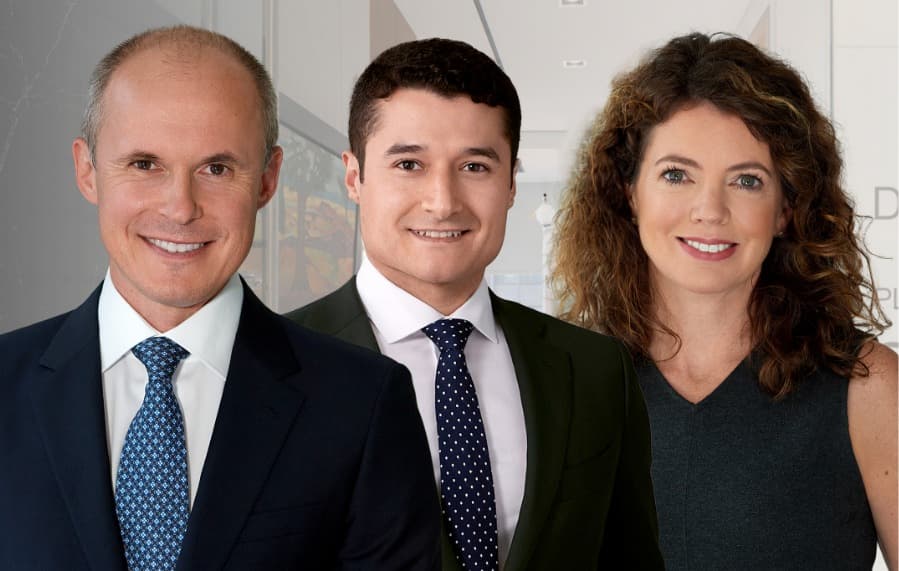Ford Plastic Surgery
410-7 St Thomas Street
Toronto, ON M5S 2B7
Phone: (416) 925-7337
Monday–Friday: 8:30 a.m.–4:30 p.m.
Ford Plastic Surgery
305-419 King Street West
Oshawa, ON L1J 2K5
Phone: (905) 743-9888
Monday–Friday: 8:30 a.m.–4:30 p.m.
Fat Grafting in the Toronto Area
Men and women who want to sculpt their bodies or look more youthful visit Ford Plastic Surgery for face, body, and breast fat grafting in Toronto. Fat grafting, also called fat transfer, is an advanced liposculpture technique that removes unwanted fat in one area and uses it in another to reshape your face and physique. Dr. Steven Hanna has trained in the newest advanced liposculpture techniques and devices to provide patients with a more natural alternative to surgical implants or synthetic fillers.
Introduction & Indications
Fat grafting uses a multi-step approach to improve volume in the face, breasts, and body. Unwanted fat is removed via liposuction, prepared, and injected into targeted areas. Many people prefer fat grafting over traditional implants or fillers because it uses their own fat to achieve their desired results. It is also versatile, offering benefits for the following areas:
Face: Also called micro fat grafting, this procedure softens creases and scars as well as replaces lost volume in areas such as the cheeks, temples, and under-eye area.
Breast: Subtly enhances breasts for natural-appearing breast augmentation or can be used to maintain some volume following breast implant removal.
Body: Adds volume to targeted areas of the body, such as the hips or buttocks.
Dr. Hanna may also combine liposuction with energy devices like Renuvion® to tighten the skin over the donor area, or Morpheus8 to rejuvenate the skin.
Assessment
During your initial consultation, Dr. Hanna will thoroughly answer any questions and explore your needs and concerns to ensure that fat grafting can accomplish your desired goals. He will also conduct a physical examination to determine whether you have sufficient donor fat to complete the liposuction and fat transfer process. Ideal fat grafting candidates are in good overall health and within their ideal weight range.
A Talented Trio
With their expertise in plastic surgery, Dr. Derek Ford, Dr. Steven Hanna, and Dr. Laura Snell create attractive, natural-looking results using advanced techniques. Each are Fellows of the Royal College of Physicians and Surgeons of Canada who provide compassionate patient care.
Learn more about our surgeons
Meet Dr. Derek Ford Meet Dr. Steven Hanna Meet Dr. Laura SnellProcedure
Fat grafting is a three-step procedure that is usually performed under general or local anesthesia:
- Fat is harvested
A special liposuction cannula is used to loosen and separate the fat, which creates less bleeding, bruising, and swelling. The loose fat is then suctioned away and stored in a canister.
- Fat is prepared
The fat is prepared for grafting to ensure only the best quality fat is used.
- Fat is Injected
The purified fat is then injected into the appropriate areas, allowing Dr. Hanna to reshape them.
Dr. Hanna prioritizes safety in all procedures and is one of few surgeons in Canada trained to perform ultrasound-guided fat grafting to the buttocks. This method of gluteal fat transfer (commonly known as ultrasound-guided Brazilian butt lift) allows more precise control during placement of the fat and provides an aesthetically pleasing result.
Recuperating After Surgery
The recovery time from a fat grafting procedure is generally 1 to 2 weeks. You may experience initial soreness, swelling, or bruising at the injection and donor sites, which should subside within 2 weeks. Gluteal fat transfer patients must avoid sitting directly on their buttocks for several weeks.
Your recovery time will be longer if your fat transfer is performed with other procedures, such as a facelift, breast lift, or abdominoplasty. Keep in mind that fat grafting recovery varies based on how much fat is removed, the number of donor sites, and the location of the injection sites.
Results
Fat grafting achieves long-lasting, natural-looking results and is considered a permanent treatment. While you will notice improvement immediately following your procedure, most patients achieve full results after 6 months.

See What’s Possible
Our practice offers Crisalix, a way for patients to preview their results in 3-D. This adds a tangible, visual element to your planning process, giving you and Dr. Ford a common, beautiful goal.
Learn MoreFat Grafting Considerations
Advanced liposculpture not only removes fat but also naturally adds volume and sculpts targeted areas of the face and body. Using one’s own fat makes this a safer, long-lasting option. Like all procedures in plastic surgery, fat grafting does have some limitations. It is important to be aware that while we may use fat like an injectable filler, the key distinction is that fat is organic—this is what allows the results to be maintained for the long term. However, because it is organic, the result is dependent on the transferred fat surviving in its new place. Many factors affect the viability of the grafted fat, and the survival rate of the fat is variable. In cases where patients lose some of the grafted fat, touch-up grafting may be required.
With respect to fat grafting of the breasts: When compared to breast implants, the increase in size from fat grafting is more modest. For this reason, breast fat transfer patients who would like larger increases in size should expect more than one round of fat grafting to achieve their goals.
Given the need for precision and artistry in performing this procedure, choosing a highly qualified plastic surgeon like Dr. Hanna with advanced training in liposculpture and body contouring techniques is essential.
If you are interested in using your own fat to sculpt and shape your facial features, breasts, or body, request a consultation using our online form. Or call our Toronto office at (416) 925-7337 or our Oshawa office at (905) 743-9888 to schedule your appointment.
Fat Grafting FAQ
What areas of the body can be treated with fat grafting?
Fat grafting is useful when you are lacking volume in an area, such as the breasts and buttocks. It is also useful to replace fat in the aging face or when patients have used weight loss medications.
Is fat grafting permanent?
Fat grafting can provide long-lasting results, but the permanence depends on how well the fat integrates into the new area, with some of the transferred fat likely being reabsorbed.

